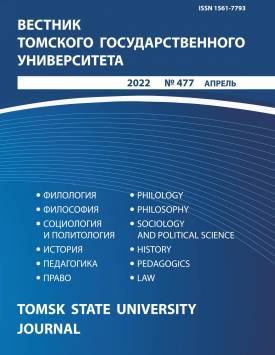Compensation for harm caused by medical treatment: Tort law vs. alternative (insurance) scheme
Two main approaches to compensation for harm caused to a patient by medical treatment are explored: under tort law (negligence-based system) and through the no-fault (insurance) scheme. Within the framework of tort law, the plaintiff (patient) has the burden of proving the preconditions of medical service provider's liability, including the fact of professional negligence and causation. Analysis of foreign legislation and case law demonstrates the strengthening of the plaintiff's procedural position due to evidentiary doctrines developed by courts and shifting the burden of proof to the defendant (Germany, Estonia, Austria, People's Republic of China, etc.). In turn, compensation schemes (New Zealand, Sweden, Finland, etc.) are characterized by formalization of the grounds for payment in favor of the injured patient. The fact of medical error is not decisive. Instead of proving a causal link, it is sufficient to establish the medical origin of the injury and its compliance with one of the criteria: preventability (avoidability) of harm, disproportionate harm to the disease, etc. An integral part of the above schemes can be compensation for harm to persons who suffered from post-vaccination injury, where the results of epidemiological statistics are widely used. At the beginning of the 21st century, medical negligence lawsuits became a notable phenomenon in the Russian legal system. At the same time, the doctrine has no developed standard of proof for this type of claims, there is no unity in the assessment of probabilistic conclusions of medical experts or their conclusions about the indirect link between medical negligence and adverse outcome, which leads to inconsistent judicial practice. The situation is exacerbated by the long time it takes to trail such cases and the significant legal costs. Based on foreign experience, a number of solutions to the above problems are proposed. It is necessary to establish special rules in the law to shift the burden of proof (on the defendant) in medical disputes - for cases of improper medical records and gross medical errors. This will mitigate information asymmetry in the relations of the disputing parties. The civil law doctrine should offer a solution for complex medical cases with competing causes of adverse outcomes. It is possible that the proportional approach will be such a solution. The emergence in Russia of alternative (no-fault) compensation schemes is also possible in the future, but implies significant transformations in the health care system. As pilot projects, compensation (insurance) schemes could be introduced for victims of vaccine-related injuries, as well as for families where children have been diagnosed with serious birth-related neurological injuries.
Keywords
medical negligence,
burden of proof,
causal link,
proportional approach,
compensation scheme,
patient insurance,
avoidability of injuryAuthors
| Kratenko Maxim V. | Pskov State University | maxkrat@yandex.ru |
Всего: 1
References
Goldberg R. Medical Malpractice and Compensation in the UK // Chicago-Kent Law Review. 2012. Vol. 87. P. 131-161.
Feldman E. Law, Society, and Medical Malpractice Litigation in Japan // Faculty Scholarship at Penn Law. 2009. № 992. P. 257-284. URL: https://scholarship.law.upenn.edu/faculty_scholarship/992 (дата обращения: 10.04.2021).
Leflar R.B. The Law of Medical Misadventure in Japan // Chicago-Kent Law Review. 2012. Vol. 87. P. 79-110.
Weisbrot D., Breen K.J. A no-fault compensation system for medical injury is long overdue // The Medical journal of Australia. 2012. Vol. 197 (5). P. 296-298. doi: 10.5694/mja12.10322
Vincent C.Compensation as a duty of care: the case for “no fault” // BMJ Quality & Safety. 2003. Vol. 12 (4). P. 240-241. doi: 10.1136/qhc.12.4.240
Козьминых Е. Обязательства вследствие причинения вреда здоровью при оказании медицинских услуг // Российская юстиция. 2001. № 2. С. 32-34.
Stauch M.S. Medical Malpractice and Compensation in Germany // Chicago-Kent Law Review. 2011. Vol. 86 (3). P. 1139-1168.
Medical malpractice and compensation in global perspective / Ken Oliphant, Richard W. Wright (eds.). Berlin/Boston, 2013. 591 p.
Law of Obligation Act, 2001. URL: https://www.riigiteataja.ee/en/eli/508082018001/consolide (дата обращения: 10.04.2021).
Кратенко М.В., Луйк О.-Ю. Возмещение вреда, причиненного вследствие ненадлежащего медицинского вмешательства: сравнительный анализ опыта РФ и Эстонии // Закон. 2020. № 7. C. 68-83.
Шмаров Л. А. Соотнесение результатов выполнения судебно-медицинских экспертиз с решениями судов по искам к медицинским организациям // Судебно-медицинская экспертиза. 2020. № 63 (3). C. 8-12. doi: 10.17116/sudmed2020630318
McGhee v National Coal Board // Wikipedia. URL: https://en.wikipedia.org/wiki/McGhee_v_National_Coal_Board (дата обращения: 10.04.2021).
Beran R.G., Rapozo V.L., Yang M. Loss of chance across different jurisdictions (the why and wherefore) // Peking University Law Journal. 2021. Vol. 8 (2). P. 1-15. doi: 10.1080/20517483.2020.1857116
Gregg v Scott // WIKI 2. Wikipedia Republished. URL: https://wiki2.org/en/Gregg_v_Scott (дата обращения: 10.04.2021).
Khadijah Mohd Najid, Putery Nemie Jahn Kassim. No-fault compensation scheme for obstetric injuries: a viable alternative? // Medico-Legal Journal. 2016. Vol. 3 (28) URL: https://www.researchgate.net/publication/317553013 (дата обращения: 10.04.2021).
Jurvelin J. Studies on Filed and Compensated Claims for Patient Injuries: Academic Dissertation, presented with the permission of the Faculty of Medicine, University of Helsinki on November 9, 2012. URL: http://urn.fi/URN:ISBN:978-952-245-750-9 (дата обращения: 10.04.2021).
Broberg M. The Danish Patient Insurance Act of 1991: first experiences // International Journal of Risk & Safety in Medicine. 1994. Vol. 6. P. 139-144.
Looker C., Kelly H. No-fault compensation following adverse events attributed to vaccination: a review of international programs // Bulletin of the World Health Organization. 2011. Vol. 89. P. 371-378. doi: 10.2471/BLT.10.081901
Mungwira R.G., Guillard C., Saldana A., Okabe N., Petousis-Harris H., Agbenu E. et al. Global landscape analysis of no-fault compensation programmes for vaccine injuries: A review and survey of implementing countries // PLoS ONE. 2020. Vol. 15(5). Art. e0233334. doi: 10.1371/journal.pone.0233334
Карапетов А.Г., Косарев А.С. Стандарты доказывания: аналитическое и эмпирическое исследование // Вестник экономического правосудия Российской Федерации. 2019. № 5 (Специальный выпуск). С. 4-88.
Стратегия развития страховой отрасли РФ на период с 2018 по 2021 год, утв. Президиумом Всероссийского союза страховщиков 31.10.2018. URL: https://raex-a.ru/files/research/2018_bsr_research_vol1.pdf (дата обращения: 10.04.2021).

